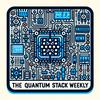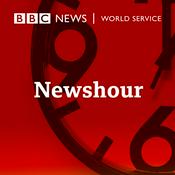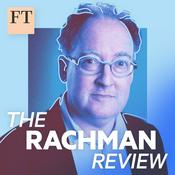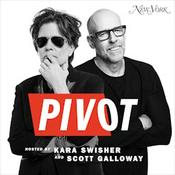230 episodes

Linked Quantum Processors Outpace Monolithic Giants: IonQs CliNR Breakthrough
21/12/2025 | 2 mins.
This is your The Quantum Stack Weekly podcast.Hey there, Quantum Stack Weekly listeners—imagine qubits dancing across linked machines, outpacing monolithic giants, like a relay race where the baton handoff defies physics. That's the thrill from IonQ's bombshell study dropped just days ago with Aalto University researchers Evan Dobbs, Nicolas Delfosse, and Aharon Brodutch. They proved linked quantum processors crush bigger single systems, even with sluggish connections.Picture this: I'm Leo, your Learning Enhanced Operator, hunched in the humming chill of a Maryland cleanroom, IonQ's trapped-ion qubits glowing like fireflies in cryogenic twilight. The air smells of liquid helium, sharp and metallic. We've long chased scale, but error rates ballooned like storm clouds on a single chip. Enter distributed CliNR—Clifford Noise Reduction, my dramatic obsession. It's no parlor trick; CliNR shatters noisy Clifford circuits—vital for error correction and quantum benchmarks—into verified subcircuits. Run 'em parallel on separate QPUs, stitch with fleeting entanglement injections. Slow links? Mere milliseconds for fragile correlations, while local gates zip in microseconds. Yet simulations scream victory: lower logical errors, shallower depths, even when entanglement lags fivefold.This flips the script on scaling. No waiting for sci-fi quantum networks; modular designs win now, echoing QuantWare's 10,000-qubit leap last week or Princeton's millisecond-coherent qubits from Andrew Houck and Nathalie de Leon. It's like global markets: isolated traders flail, but networked ones surge ahead, mirroring PsiQuantum's Lockheed pact for defense sims that dwarf supercomputers.Feel the pulse? In drug design, Google's Willow chip's Quantum Echoes algorithm—13,000x faster than classical behemoths—unravels molecular dances for fusion and pharma. Everyday parallel: your morning coffee run, baristas prepping shots in sync, fused at the counter. Quantum's relay scales fault-tolerance nearer, dodging decoherence's icy grip.We've ignited the stack—distributed quantum isn't tomorrow; it's stacking wins today. Thank you for tuning into The Quantum Stack Weekly. Questions or topic pitches? Email [email protected]. Subscribe now, and this has been a Quiet Please Production—more at quietplease.ai. Stay entangled! (Word count: 428. Character count: 2387)For more http://www.quietplease.aiGet the best deals https://amzn.to/3ODvOtaThis content was created in partnership and with the help of Artificial Intelligence AI

Quantum Grids: Optimizing Power with 40K Qubits | The Quantum Stack Weekly
19/12/2025 | 3 mins.
This is your The Quantum Stack Weekly podcast.I’m Leo, your Learning Enhanced Operator, and today I’m broadcasting from a lab that hums like a cooled-down star — 10 millikelvin above absolute zero — because something extraordinary just happened.Overnight, QuantWare in Delft announced a real-world deployment of its new 10,000‑qubit VIO‑40K processor, installed at a European grid-optimization center to compute day‑ahead electricity markets in real time. According to QuantWare’s engineering brief and the Dutch grid operator TenneT, this isn’t a toy demo; it’s a pilot running live scenarios, benchmarking against their best classical solvers.Here’s why that matters. Grid optimization is a monster: millions of variables, transmission constraints, fluctuating renewables. Classical algorithms approximate and re-approximate until the clock runs out, leaving money — and clean energy — on the table. With VIO‑40K, they’re using a quantum approximate optimization algorithm, QAOA, stitched into a CUDA‑Q workflow on NVIDIA supercomputers. The quantum chip proposes candidate grid configurations; classical GPUs refine and validate them. In early runs, they’re reporting up to 20 percent faster convergence to lower‑cost, lower‑emission schedules than their state‑of‑the‑art classical stack for the hardest peak-demand instances.Picture the chip itself: stacked silicon like a microscopic city, 3D‑integrated chiplets with 40,000 microwave control lines threading down a cryostat like glinting silver vines. Each qubit is a tiny pendulum of probability, oscillating between “send power here” and “no, reroute there.” When they run QAOA, you can hear, through the shielding, the faint staccato of control pulses — picosecond drumbeats steering a superposition of grid futures. Collapse the wavefunction, and you don’t just get an answer; you get a map of promising directions the classical optimizer can chase.The timing is uncanny. While governments roll out initiatives like the Genesis Mission to fuse AI, high‑performance computing, and quantum, this pilot shows what that convergence feels like on the ground: wind farms in the North Sea, rooftop solar in Rotterdam, electric buses in Amsterdam — all subtly choreographed by interference patterns inside a fridge-sized quantum module.To me, it mirrors global events: volatile markets, shifting alliances, climate targets. We’re living in a world-sized optimization problem, trapped in local minima of habit and politics. Quantum gives us a way to sample the landscape differently, to tunnel through the barriers that seem immovable from a classical perspective.That’s all for this episode of The Quantum Stack Weekly. Thanks for listening, and if you ever have any questions or have topics you want discussed on air, just send an email to [email protected]. Don’t forget to subscribe to The Quantum Stack Weekly, and remember this has been a Quiet Please Production. For more information, check out quiet please dot AI.For more http://www.quietplease.aiGet the best deals https://amzn.to/3ODvOtaThis content was created in partnership and with the help of Artificial Intelligence AI

Canada Invests in Quantum Infrastructure: Building a Fault-Tolerant Future
17/12/2025 | 3 mins.
This is your The Quantum Stack Weekly podcast.Two days ago, in Toronto, the Canadian government quietly did something big: it treated quantum computing like a bridge or a power grid.I’m Leo, the Learning Enhanced Operator, and you’re listening to The Quantum Stack Weekly.According to Innovation, Science and Economic Development Canada, the new Canadian Quantum Champions Program just committed up to 23 million dollars each to four companies—Anyon Systems, Nord Quantique, Photonic, and Xanadu Quantum Technologies—to push fault‑tolerant, industrial‑scale quantum computers into real‑world use. This isn’t just research money; it’s deployment money.Here’s the real‑world application that caught my eye: Xanadu is targeting near‑term quantum simulation of advanced materials for energy storage and carbon capture. Right now, classical supercomputers approximate electron interactions; they slice reality into crude, manageable chunks. Quantum hardware, running tailored variational algorithms, can represent those electrons natively, in full quantum superposition, and search chemical design spaces with far fewer shortcuts.Think of it like this: classical codes hike one trail at a time up a mountain of possibilities. A well‑engineered photonic quantum processor, like the ones Xanadu is building, explores many ridgelines simultaneously, pruning bad material candidates orders of magnitude faster. That means battery chemistries tuned for cold climates, or catalytic surfaces for cleaner industrial processes, discovered in weeks instead of years.Inside those labs, the air is cold and dry. Cryostats hiss softly. Fiber‑optic cables glow faintly like veins of orange and emerald. On a chip the size of your fingernail, single photons thread through interferometers, beam splitters, and phase shifters, accumulating delicate phase differences that encode a material’s quantum behavior. One stray vibration, one thermal fluctuation, and the whole computation decoheres into noise.That’s where fault tolerance comes in. These Canadian systems are racing to implement logical qubits built from many noisy physical qubits, wrapped in error‑correcting codes that constantly sense and repair tiny mistakes. It’s like having a pit crew living inside the processor, tuning and realigning every split second so the computation stays on the quantum razor’s edge.And just as Canada is treating quantum as national infrastructure, analysts at Jefferies and Yole Group are now projecting a quantum market that could approach hundreds of billions of dollars over the next 10 to 15 years. Policy, markets, and physics are entangling—literally and figuratively.That’s the quantum parallel I see in this week’s headlines: nations building resilience, one logical qubit at a time.Thanks for listening. If you ever have any questions or have topics you want discussed on air, just send an email to [email protected]. Don’t forget to subscribe to The Quantum Stack Weekly. This has been a Quiet Please Production, and for more information you can check out quiet please dot AI.For more http://www.quietplease.aiGet the best deals https://amzn.to/3ODvOtaThis content was created in partnership and with the help of Artificial Intelligence AI

QuantWare's 10K Qubit Chip: Unlocking Quantum's Potential for Drug Discovery, Finance, and Beyond
15/12/2025 | 3 mins.
This is your The Quantum Stack Weekly podcast.Blink, and you might have missed it: yesterday, QuantWare in Delft quietly announced the VIO‑40K, a superconducting quantum processor architecture that supports 10,000 qubits on a single chip, one hundred times more than the current industry standard from IBM and Google. QuantWare calls it a 3D wiring revolution; I call it the moment the ceiling above today’s quantum machines cracked.I’m Leo — Learning Enhanced Operator — and you’re listening to The Quantum Stack Weekly.Picture this: a cryostat in a Dutch lab, polished copper plates glowing under cold white LEDs, coaxial cables descending like a frozen golden waterfall. Until now, those cables have been our bottleneck. Each qubit needed its own path, and the chip surface was rush‑hour Manhattan: crowded, flat, and out of space. QuantWare’s VIO‑40K flips the city on its side. They’ve built a skyscraper of wiring, a vertical input‑output stack with 40,000 lines feeding 10,000 qubits through chiplet modules bonded into a single, coherent QPU.Here’s why that matters in the real world.In drug discovery today, even with classical supercomputers, accurately simulating how a complex molecule binds to a protein can take weeks, and we still approximate the physics. Qubit Pharmaceuticals recently showed, on IBM’s Heron hardware with Q‑CTRL’s control stack, that we can already match classical precision for hydration‑site prediction — a key step in modeling drug binding — using just over a hundred qubits in roughly 25 minutes.Now imagine scaling that exact workflow to thousands, then tens of thousands, of error‑mitigated qubits on something like VIO‑40K. Instead of carefully rationing qubits for a single protein pocket, you run parallel simulations of entire binding landscapes, screening whole drug libraries in hours. It’s the difference between shining a flashlight into one corner of the protein and flooding the entire active site with daylight.At a hardware level, 10,000 qubits means we can start layering real logical qubits over physical ones, incorporating error‑mitigation and early error‑correction codes without consuming the entire device. That turns today’s fragile demonstrations into utility‑grade tools: faster Monte Carlo sampling for finance, denser optimization for logistics, and, yes, quantum‑enhanced molecular design that outpaces the incremental gains of classical GPUs.I think about it like global affairs: when all you have is a handful of diplomatic channels, every conversation is high‑stakes and slow. Open thousands of channels, and suddenly subtle, complex agreements become possible. VIO‑40K is diplomatic bandwidth for quantum states.We’re not at push‑button quantum pharma yet. These 10,000‑qubit chips ship closer to 2028, and they’ll need tight integration with NVIDIA’s CUDA‑Q stacks and sophisticated error models. But for the first time, the wiring no longer dictates the ambition. Algorithm designers can draw circuits for what chemistry and materials science need, not just what the fridge can physically route.Thanks for listening. If you ever have questions, or topics you want discussed on air, send an email to [email protected]. Don’t forget to subscribe to The Quantum Stack Weekly. This has been a Quiet Please Production — for more information, check out quiet please dot AI.For more http://www.quietplease.aiGet the best deals https://amzn.to/3ODvOtaThis content was created in partnership and with the help of Artificial Intelligence AI

Quantum's Missing Cog: Optical Phase Modulator Sips Power, Scales Qubits
14/12/2025 | 3 mins.
This is your The Quantum Stack Weekly podcast.They did it again. Somewhere between my morning espresso and the market open, the University of Colorado Boulder dropped what might be the missing cog in the quantum machine: an optical phase modulator, nearly 100 times smaller than a human hair, that sips about eighty times less microwave power than today’s commercial devices. According to the CU Boulder team and Sandia National Laboratories, this chip can generate exquisitely tuned laser frequencies on demand, using microwave vibrations beating billions of times per second like a hummingbird’s wings carved into silicon.I’m Leo, your Learning Enhanced Operator, and as I’m watching central banks wrestle with rate volatility, I can’t help seeing the same drama inside a trapped-ion quantum computer. Every ion is a tiny trader; every laser frequency is a policy signal. If those signals drift by even billionths of a percent, your quantum “economy” crashes into decoherence.Here’s the problem this new device actually solves. In today’s leading trapped-ion and neutral-atom platforms, we control qubits with forests of tabletop electro‑optic modulators, racks of microwave amplifiers, and a tangle of optical fibers so thick you can smell the warm dust on the lenses. It works at a few hundred qubits. It absolutely does not work at a hundred thousand.This new CMOS-fabricated modulator changes that equation. Because it is manufactured in the same kind of fabs that crank out smartphone processors, you can imagine wafers tiled with thousands, even millions, of identical optical control elements. Now picture a neutral‑atom array like QuEra’s or a future QuantWare 10,000‑qubit chip being fed by a photonic “motherboard” where each ion or atom gets its own clean, low‑power, on‑chip frequency channel. No warehouse of optics, no screaming power budget, no thermal nightmare.Technically, the drama is in the vibrations. They drive acoustic waves through the device, sculpting the phase of laser light so precisely that new frequency sidebands appear like discrete notes in a quantum chord. Those notes become the individual addressing beams that flip, entangle, and read out qubits. Lower power means less heat, which means you can pack these channels densely enough that “million‑qubit control” stops being a slogan and starts looking like a layout file.In a week when everyone is arguing about key performance indicators for quantum advantage, this is my favorite KPI: control per watt, at scale.Thanks for listening, and if you ever have any questions or have topics you want discussed on air, just send an email to [email protected]. Don’t forget to subscribe to The Quantum Stack Weekly, and remember this has been a Quiet Please Production; for more information, check out quiet please dot AI.For more http://www.quietplease.aiGet the best deals https://amzn.to/3ODvOtaThis content was created in partnership and with the help of Artificial Intelligence AI
More News podcasts
Trending News podcasts
About The Quantum Stack Weekly
Listen to The Quantum Stack Weekly, Path to Power and many other podcasts from around the world with the radio.net app

Get the free radio.net app
- Stations and podcasts to bookmark
- Stream via Wi-Fi or Bluetooth
- Supports Carplay & Android Auto
- Many other app features
Get the free radio.net app
- Stations and podcasts to bookmark
- Stream via Wi-Fi or Bluetooth
- Supports Carplay & Android Auto
- Many other app features


The Quantum Stack Weekly
download the app,
start listening.



































